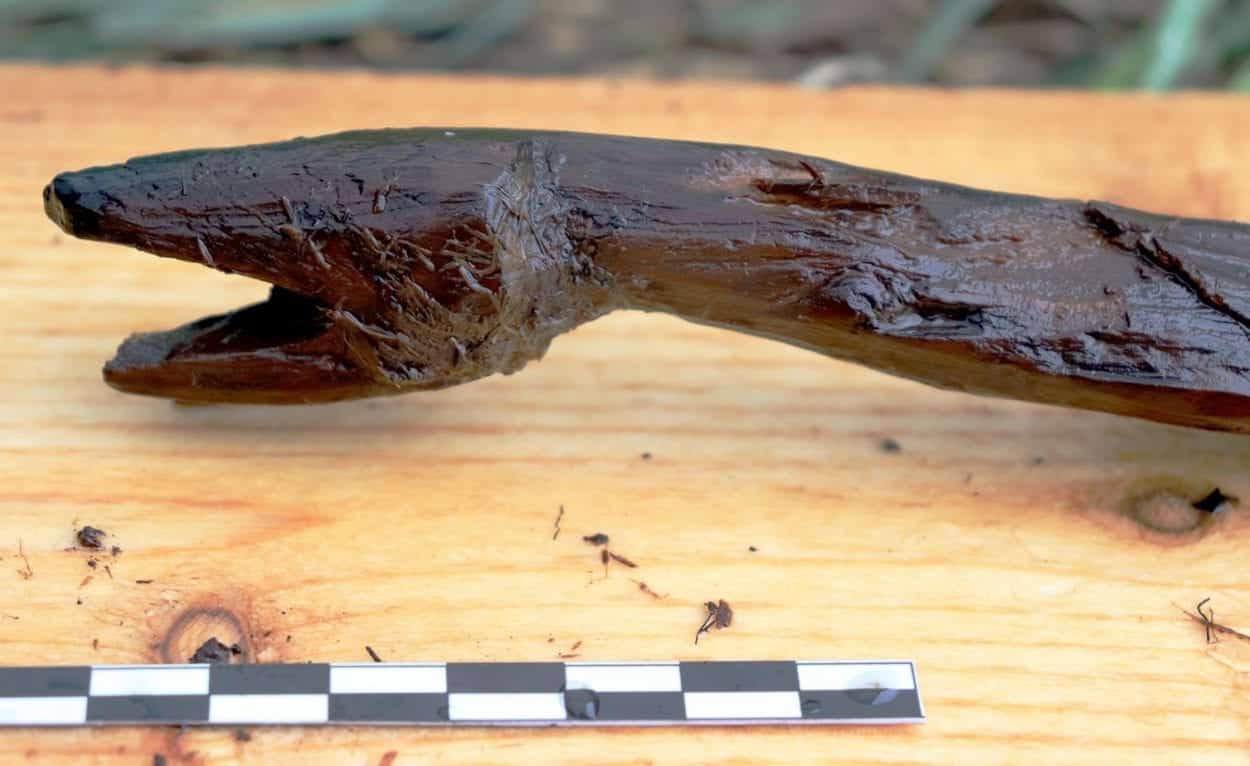Archaeologists from the University of Turku, in collaboration with the Finnish Heritage Agency, and researchers from the University of Helsinki have uncovered a stone age wooden “staff” shaped like a serpent.
The discovery was made at the Järvensuo 1 prehistoric site, an ancient wetland environment on the shores of Rautajarvi Lake in the southwest of Finland. Järvensuo 1 was discovered by accident during the 1950’s by ditch diggers, and has been subject to ongoing excavations first commenced in 2019.
Due to the anaerobic conditions of the soil, previous studies have uncovered several perfectly preserved wooden artefacts, that includes a wooden scoop with a handle shaped like a bear’s head.
The latest “staff” discovery measures half a metre in length, and is shaped like a naturalistic slithering serpent with a snake’s head, that may have been used by a Stone Age shaman for ritualistic purposes.

Archaeologists note that the discovery is unlike any other wooden artefact from Neolithic Northern Europe, although snakes are sometimes depicted in contemporary rock art pictographs from the Pit-Comb Ware Culture (also called the Comb Ceramic Culture) where they are held by human-like figures.
Dr Antti Lahelma from the University of Helsinki said: “There seems to be a certain connection between snakes and people, this brings to mind northern shamanism of the historical period, where snakes had a special role as spirit-helper animals of the shaman.”
Several wooden artefacts were also uncovered during recent excavations, including wooden utensils, structural remains, and many pieces of fishing equipment.

Dr Satu Koivisto, principal investigator of the Järvensuo research from the University of Turku, and lead author of this study said: “Well-preserved finds from wetlands help our understanding of ancient peoples and the landscape where they performed both mundane and sacred activities.”
The researchers stress that Järvensuo 1 is under threat, as drainage works and environmental changes exacerbated by climate change is placing the site and underlining archaeology at risk. “The signs of destruction caused by extensive drainage are already clearly evident at the site, and its organic treasures are no longer safe.” added Dr Koivisto. Find out more
Header Image Credit : Antiquity





